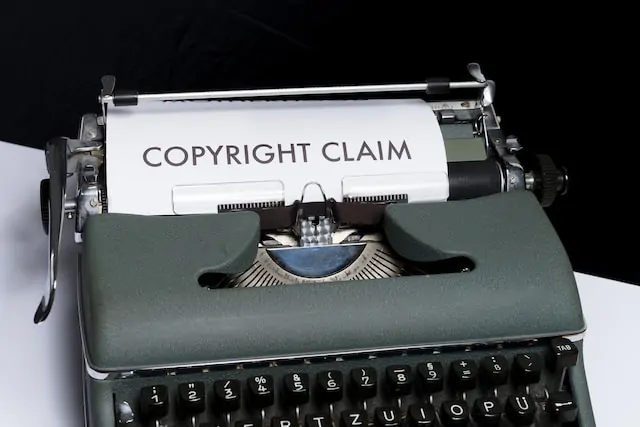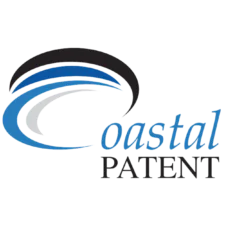FAQ
Qualified Patent Attorneys
Why You Need a Patent & Trademark Lawyer

Legal Expertise: Patent and trademark laws can be complex and vary from one jurisdiction to another. A specialized lawyer has the expertise to navigate these intricate legal frameworks, ensuring that your intellectual property rights are protected effectively.
Filing and Registration: Lawyers can help you properly prepare and file patent and trademark applications. They understand the intricacies of the application process, increasing your chances of approval and reducing the risk of errors or rejections.
Search and Clearance: Lawyers can conduct comprehensive searches to ensure that your proposed trademark or invention does not infringe upon existing patents or trademarks. This helps you avoid costly legal disputes and potential rebranding efforts.
Enforcement and Protection: In the event of infringement, a patent and trademark lawyer can take legal action on your behalf to enforce your rights. They can send cease-and-desist letters, negotiate settlements, or pursue litigation if necessary.
Portfolio Management: If you have multiple patents or trademarks, a lawyer can help you manage and maintain your intellectual property portfolio effectively. This includes renewals, monitoring for potential infringements, and strategic decision-making.
Expert Guidance: Lawyers provide valuable advice and guidance throughout the entire process, helping you make informed decisions about your intellectual property strategy and how to best protect your innovations or brand.
Risk Mitigation: Having a lawyer on your side can help reduce the risk of costly mistakes and legal disputes, ultimately saving you time and money in the long run.
In summary, a patent and trademark lawyer is essential for ensuring that your intellectual property rights are adequately protected, your applications are handled correctly, and your brand or inventions are shielded from potential infringement and legal challenges. Their expertise is invaluable in safeguarding your intellectual assets.
PATENT
Patent Search
You have a great idea for a product or service, and you believe this idea to be new and useful. What is the first step?
Every idea should begin with a search. Many will choose to perform an internet search, for example, using Google.com or other internet search engine. In fact, this is where you should begin. When performing an internet search, enter the keywords that you think identify features that define the product, and search ‘images’ to quickly identify anything related. If nothing immediately materializes, then you are ready for a patent search.
You may conduct a patent search using Google Patents.
Alternatively, you may use another free patent searching tool like Free Patents Online.
Take notes and/or download copies of any documents that you find that may be related to your invention.
Next, contact CPLG to discuss the next steps. It may be that no further search is necessary, or perhaps a professional patent search and patentability opinion may be advisable.
Provisional Patent Application
At this point you should have performed at least an internet search, and are looking for the next step toward obtaining a patent.
A provisional patent application (PPA) can be described as an informal patent application that discloses the invention, all of its differentiating features and how they interrelate to acheive a desired function or utility. The PPA, if prepared properly, will protect the disclosed invention for a period of one-year, during which time the inventor may use “patent pending” in connection with the product or marketing materials.
Many patent applicants elect to file a provisional patent application immediately, in order to obtain patent protection, and to enable the patent applicant to entertain confidential disclosures with potential manufacturers, partners, investors, and others. As you might imagine, disclosing an invention to others without protection can create legal issues, such as misappropriation of invention or the unintended creation of prior art.
There are many strategies related to filing a PPA, and we encourage you to contact CPLG for more information.
Non-Provisional Application
A non-provisional utility patent application is what most people are thinking of when discussing a “patent”. The non-provisional application may be filed initially, or subsequent to a prior-filed provisional patent application.
To obtain a patent, the invention being claimed must be useful, novel and non-obvious. A patent provides its holder the right to exclude others from making, using, offering for sale, selling or importing the patented invention. The patent is generally in force for twenty-years after the non-provisional application filing date.
For answers to general questions or to receive more information about the patent process, please call or schedule a free initial consultation.
Design Application
In the U.S., a design patent protects the ornamental characteristics of a product as shown and described in the design patent, and may protect variations that are deemed by a court as being “substantially similar”. To circumvent a design patent, one must only change the shape or design of the product. However, when investing in tooling for manufacturing and in other situations it is beneficial to obtain design patent protection.
One advantage of holding a design patent is the additional legal remedy of profit disgorgement under 35 U.S.C. § 289, which in some situations allows the design patent holder to obtain the profits of the infringer.
How Will I Be Kept Informed about My Case?
Answer the question here. Make sure you answer all frequently asked questions to clear some common doubts. People love when they find a solution without having to wait for your reply. This also shows that you have enough knowledge that you can share and help them out.
Maintenance
Congratulations! Once your patent is issued, the only remaining requirement is to maintain the patent by paying maintenance fees every four years from the issue date.
Maintenance fees can be paid beginning with the 3.5, 7.5, and 11.5 year anniversaries of the patent issue date, and must be paid by the 4, 8, and 12 year anniversaries, respectively. However, there is a six-month grace period for each maintenance fee deadline, provided the patent holder submits a surcharge payment in addition to the regular maintenance fee.
International PCT
Some patent applicants may wish to pursue patent rights outside the United States of America (OUS). In this situation, we often advise the procedure provided under the Patent Cooperation Treaty (PCT), that is, to file a PCT application before the World Intellectual Property Organization (WIPO).
A PCT patent application can be filed in the U.S. receiving office (RO) at the USPTO.
Once filed, the PCT application undergoes a patentability search, and receives a written opinion from the international preliminary examination authority (IEPA). In this regard, the applicant may receive an opinion from the WIPO examiner prior to filing in multiple countries, which opinion may inform further procedure and investment.
Our Patents
Foreign patents, or those outside the United States (OUS), are sometimes desired.
OUS patents can be relatively expensive to procure and maintain. For example, many countries require annual maintenance payments (annuities) to maintain pendency of a patent application. In addition, local (foreign) counsel will be required, and translations are sometimes necessitated, each resulting in a corresponding cost. For these reasons, we generally advise OUS patents only in territories where the applicant has or is expected to have substantial business interests.
CPLG has a network of foreign attorneys and agents should you or your company desire OUS patent protection.
Patent Opinions
In the course of business any of a number of intellectual property related opinions may be desired. For example, after obtaining patent search results a prospective patent applicant may desire a patentability opinion from an experienced patent attorney. Other opinions, such as freedom to operate or infringement/non-infringement opinions may be desired.
Generally, a freedom to operate opinion is a comprehensive analysis and opinion concerning whether a business has the unrestricted freedom to sell a particular product or service in view of the patent, trademark, and copyright landscapes.
A more narrowly tailored opinion might be an infringement/non-infringement opinion which compares a product/service to a specific patent or family of patents.
CPLG is ready to discuss your company’s needs relating to infringement and freedom to operate analysis.
Third Party Submissions
35 U.S.C. 122(e) provides a mechanism for third parties to submit patents, published patent applications, or other printed publications of potential relevance to the examination of a patent application with a concise description of the asserted relevance of each document submitted.
Under 35 U.S.C. 122(e), such submissions may be made before (1) the later of (i) 6 months after the date of publication or (ii) the date of a first Office action on the merits rejecting any claims, or (2) before the date of a notice of allowance, if earlier. Section 122(e) also provides for such fees as the Director may prescribe.
This new provision was effective on September 16, 2012, and applies to any patent application.
Derivation Proceeding
A derivation proceeding is a trial proceeding conducted at the Board to determine whether (i) an inventor named in an earlier application derived the claimed invention from an inventor named in the petitioner’s application, and (ii) the earlier application claiming such invention was filed without authorization. An applicant subject to the first-inventor-to-file provisions may file a petition to institute a derivation proceeding only within 1 year of the first publication of a claim to an invention that is the same or substantially the same as the earlier application’s claim to the invention. The petition must be supported by substantial evidence that the claimed invention was derived from an inventor named in the petitioner’s application.
Ex Partee Reexamination
The reexamination statute, 35 U.S.C. 302, and rules permit any person to file a request for an ex parte reexamination containing certain elements and the appropriate fee. The USPTO initially determines if “a substantial new question of patentability” is presented. If such a new question has been presented, reexamination will be ordered. The reexamination proceedings which follow the order for reexamination are very similar to regular examination procedures in patent applications; however, there are notable differences. For example, there are certain limitations as to the kind of rejections which may be made in an ex parte reexamination, special reexamination forms to be used, and time periods set to provide “special dispatch.” When the prosecution of a reexamination proceeding is terminated, a reexamination certificate is issued which indicates the status of all claims following the reexamination.
Inter Parties Review
Inter partes review is a trial proceeding conducted at the Patent Trial & Appeal Board (PTAB) to review the patentability of one or more claims in a patent only on a ground that could be raised under §§ 102 (Novelty) or 103 (Obviousness), and only on the basis of prior art consisting of patents or printed publications. For first-inventor-to-file patents, inter partes review process begins with a third party (a person who is not the owner of the patent) filing a petition after the later of either: (1) 9 months after the grant of the patent or issuance of a reissue patent; or (2) if a post grant review is instituted, the termination of the post grant review. These deadlines do not apply to first-to-invent patents. The patent owner may file a preliminary response to the petition. An inter partes review may be instituted upon a showing that there is a reasonable likelihood that the petitioner would prevail with respect to at least one claim challenged. If the proceeding is instituted and not dismissed, a final determination by the Board will be issued within 1 year (extendable for good cause by 6 months).
Post Grant Review
Post grant review is a trial proceeding conducted at the Board to review the patentability of one or more claims in a patent on any ground that could be raised under § 282(b)(2) or (3). Post grant review process begins with a third party filing a petition on or prior to the date that is 9 months after the grant of the patent or issuance of a reissue patent. The patent owner may file a preliminary response to the petition. A post grant review may be instituted upon a showing that, it is more likely than not that at least one claim challenged is unpatentable. If the proceeding is instituted and not dismissed, a final determination by the Board will be issued within 1 year (extendable for good cause by 6 months).
TRADEMARK
Trademark Search & Clearance
Searching for conflicting marks before you apply is called a “clearance search.” CPLG includes a clearance search in our trademark application service.
However, searching is only one part of a thorough clearance search. There may be trademarks that are not in the USPTO database that have rights over yours. We often check a variety of sources, such as state trademark databases and the internet. Before hiring us to start the process, you should (1) do an internet search to see if anyone is using the mark, and if so, what make notes of what they are selling in connection with the mark; and (2) check to see if the .com domain is available, because if not, it may be a better idea at this point to find a mark with available corresponding .com domain.
Note that Registration is not guaranteed by the USPTO. The USPTO examining attorney will carefully examine your application to see if your prospective trademark meets the requirements for federal registration. Although this includes performing a database search, there are many considerations. The USPTO may find a conflicting mark or another legal issue that bars your registration.
Apply to Register a Trademark
A trademark is a word, phrase, symbol, and/or design that identifies and distinguishes the source of the goods of one party from those of others.
A service mark is a word, phrase, symbol, and/or design that identifies and distinguishes the source of a service rather than goods. Some examples include brand names, slogans, and logos.
The term “trademark” is often used in a general sense to refer to both trademarks and service marks.
Unlike patents and copyrights, trademarks do not expire after a set term of years. Trademark rights come from actual “use” . Therefore, a trademark can last forever – so long as you continue to use the mark in commerce to indicate the source of goods and services. A trademark registration can also last forever – so long as you file specific documents and pay fees at regular intervals.
Assuming your mark passes the initial clearance, we can apply to register your mark with the USPTO.
Opposition to a Trademark
An opposition is a proceeding in which one party is seeking to prevent registration of another party’s trademark. Under the law, if a party believes that it will be damaged by the registration of a mark, it can file an opposition.
An opposition proceeding is a trial conducted at the tardemark trial and appeal board (TTAB) within the USPTO.
Cancellation of a Trademark
A trademark cancellation proceeding is an administrative proceeding, similar to a civil federal lawsuit, before the Trademark Trial and Appeal Board (TTAB) in which one party requests that a registered trademark be cancelled. In other words, a mark that has successfully made its way through the trademark registration process still remains subject to cancellation by a party with proper grounds.
Any person or entity that believes it is or will be damaged by the registration of a mark on the principal register, may file a petition to cancel.
The person or entity filing the Petition to Cancel is called the Petitioner while the other party is generally referred to as the Registrant.


TRADEMARK
A trademark is a distinctive symbol, logo, word, phrase, or design that is used by individuals, businesses, or organizations to identify and distinguish their goods or services from those of others. It serves as a form of intellectual property protection, helping consumers recognize and associate specific products or services with a particular source or brand. Trademarks can be registered with government authorities to provide legal protection and exclusive rights to the owner, preventing others from using a similar mark in a way that may cause confusion in the marketplace. The primary purpose of a trademark is to build brand recognition and trust among consumers while safeguarding the brand’s unique identity from imitation or misuse.
PATENT
A patent is a legal document issued by a government authority that grants exclusive rights to an inventor or assignee for a specified period, typically 20 years from the date of filing, to make, use, sell, or license their invention. In exchange for disclosing their invention to the public through the patent, the inventor gains the exclusive right to protect their innovation from being used or copied by others. Patents are crucial for fostering innovation and encouraging inventors to invest time and resources in developing new technologies, products, or processes. They provide a legal framework for inventors to safeguard their intellectual property and potentially profit from their innovations.

